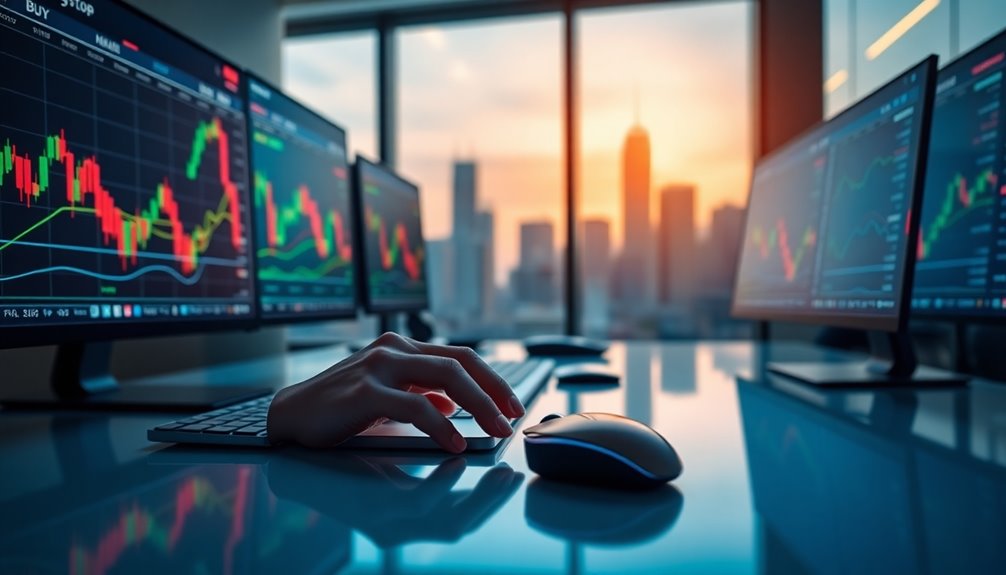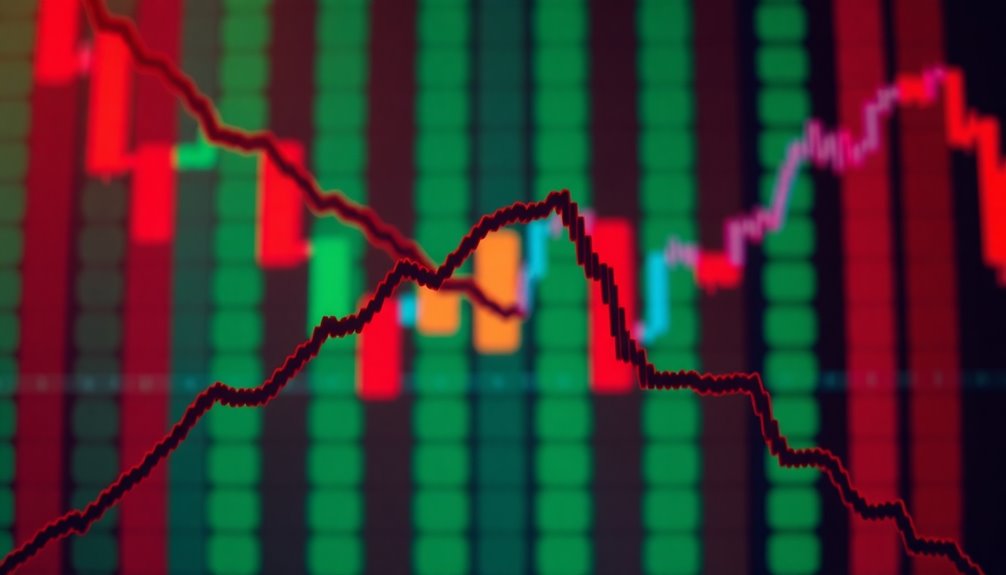Futures trading in crypto allows you to speculate on the future prices of cryptocurrencies, enabling profit opportunities whether the market is rising or falling. You can take long or short positions and use leverage to control larger amounts with less capital, but this also heightens risk. Major exchanges like CME Group and Binance facilitate these trades, offering cash or physical delivery options. While it provides advantages, like lower fees, be cautious of high volatility and market manipulation. If you're curious about how it all works, you might find valuable insights waiting for you.
Key Takeaways
- Futures trading in crypto allows investors to speculate on future price movements of cryptocurrencies using long or short positions.
- Contracts can be settled through cash or physical delivery, impacting how traders manage their positions.
- Leverage in futures trading enables control of larger positions, but it also increases the risk of significant losses.
- Major exchanges like CME Group and Binance provide a regulated environment for executing crypto futures contracts.
- Growing interest from both retail and institutional investors has led to increased trading volume in crypto futures markets.
Crypto Futures Contract Overview
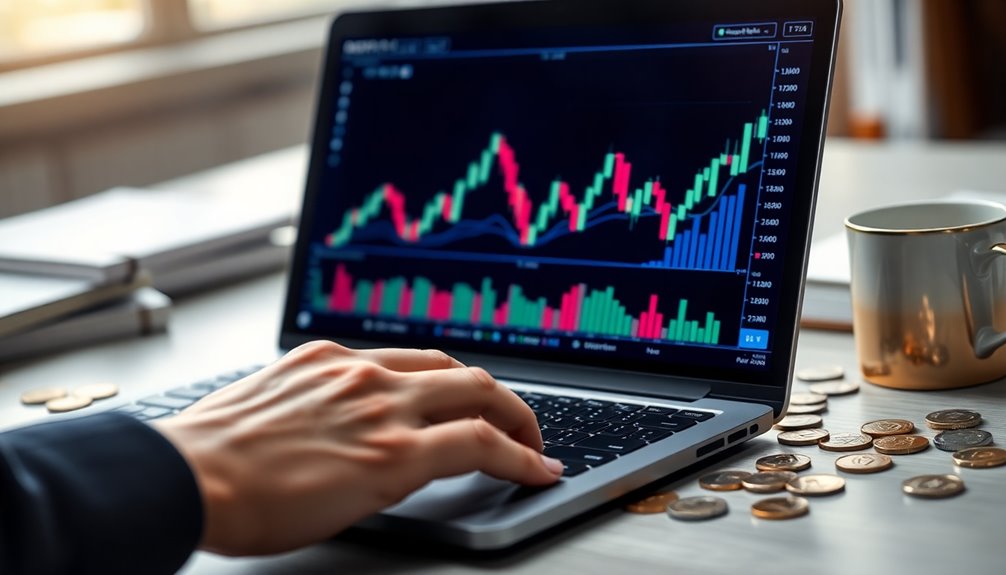
Crypto futures contracts are powerful financial tools that allow you to speculate on the future price of cryptocurrencies. By taking a long or short position, you can bet on price movements, which is fundamental in the volatile crypto trading environment.
These contracts are settled either in cash or through physical delivery of the underlying asset, impacting your margin account and overall trading strategy. Major exchanges like CME Group and Binance facilitate this futures market, providing standardized contracts.
Leverage amplifies your potential gains but also increases the risk of losses, making risk management essential. With over 50% of global crypto trading volume involving futures contracts, they play a significant role in market liquidity and price discovery.
Futures Trading Basics Explained
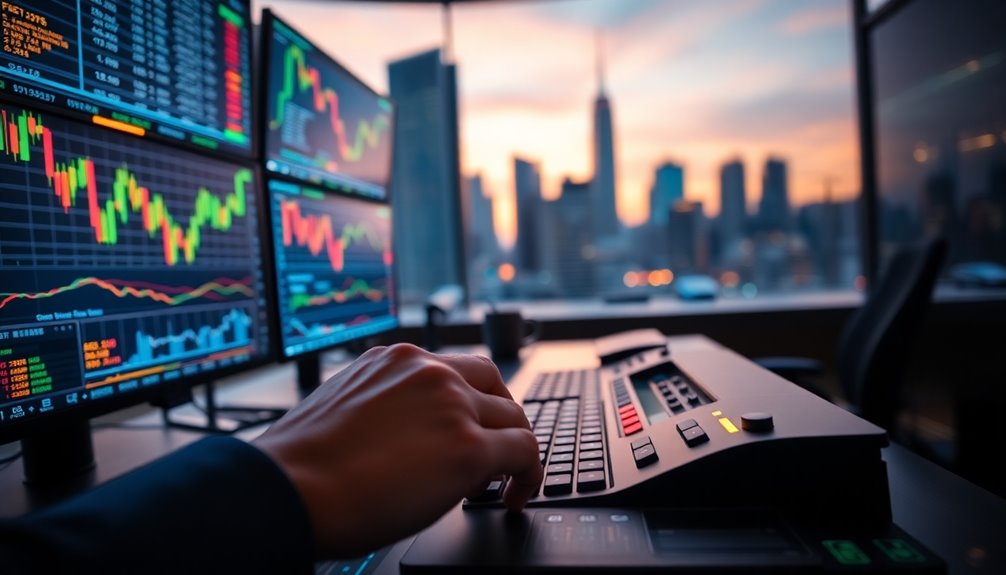
Understanding the fundamentals of futures trading is key to harnessing its potential in the crypto market.
Crypto futures contracts allow you to speculate on future cryptocurrency prices, typically settled via cash settlement or delivery of the underlying assets. With leverage, you can control larger positions with less capital, but keep in mind the margin requirements that dictate your minimum collateral.
Trading occurs on regulated exchanges like CME Group and Binance, ensuring a transparent environment. You can choose between perpetual contracts, which have no expiration date, and fixed-date contracts based on your trading strategies.
As trading volume in crypto futures surges, accounting for over 50% of global crypto activity, it highlights growing interest from both retail and institutional investors. This surge in trading volume reflects a broader acceptance of cryptocurrency as a viable investment option, prompting many to seek guidance on crypto investing basics for beginners. Educational resources and platforms are increasingly emerging to equip novice investors with the necessary knowledge and strategies to navigate this dynamic market. As interest continues to grow, understanding these fundamentals becomes crucial for anyone looking to capitalize on the expanding opportunities within the crypto space.
Contract Execution and Settlement
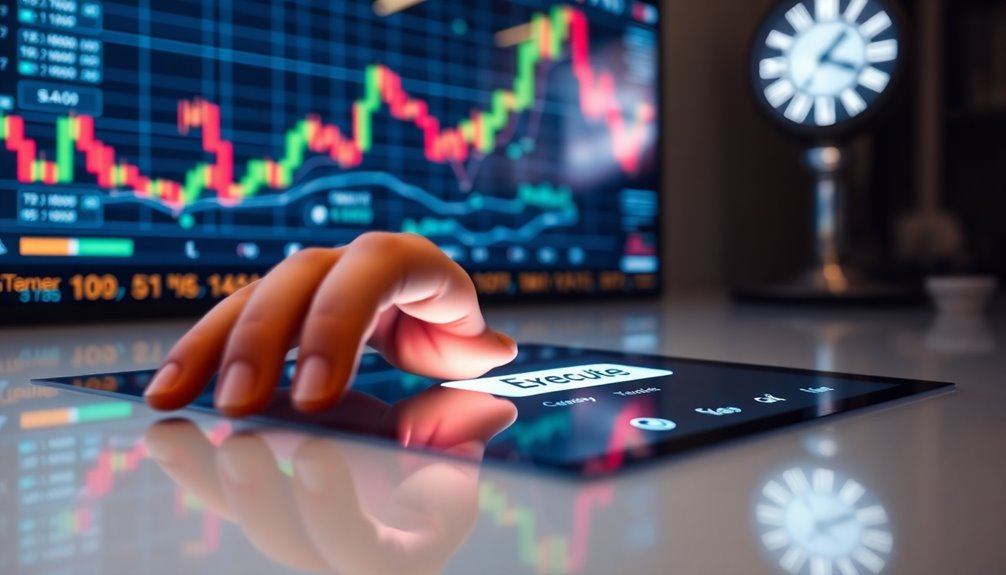
When you enter the world of futures trading, executing and settling contracts is an essential step in your trading strategy. Futures contracts allow you to speculate on the price movements of an underlying cryptocurrency without owning it.
Contract execution happens on trading platforms like CME Group and Binance, where trades match according to standardized specifications. As the expiration date approaches, you can choose to offset, roll over, or settle your position.
Settlement can occur through cash settlement, where you receive the difference between the contract price and market price, or through physical delivery of the cryptocurrency itself.
Pros and Cons Summary
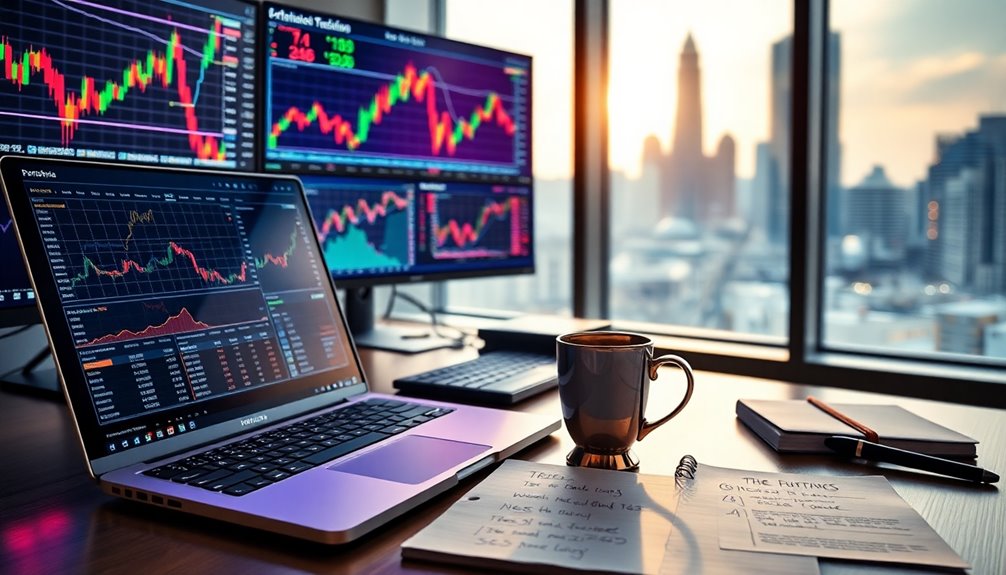
Futures trading offers a mixed bag of advantages and drawbacks that every trader should consider.
On the pro side, you can profit from both rising and falling markets by taking long or short positions based on market expectations. The high leverage options, sometimes up to 100x, let you control larger positions with less capital, potentially amplifying your profits. Plus, you'll generally face lower fees compared to spot markets.
However, the high volatility of cryptocurrencies can lead to significant losses, especially with leverage, heightening the risk of liquidation. Additionally, regulatory uncertainties surrounding futures trading can affect market legality and your confidence as a participant, making it essential to approach this trading method with caution and thorough research.
Crypto vs. Traditional Futures
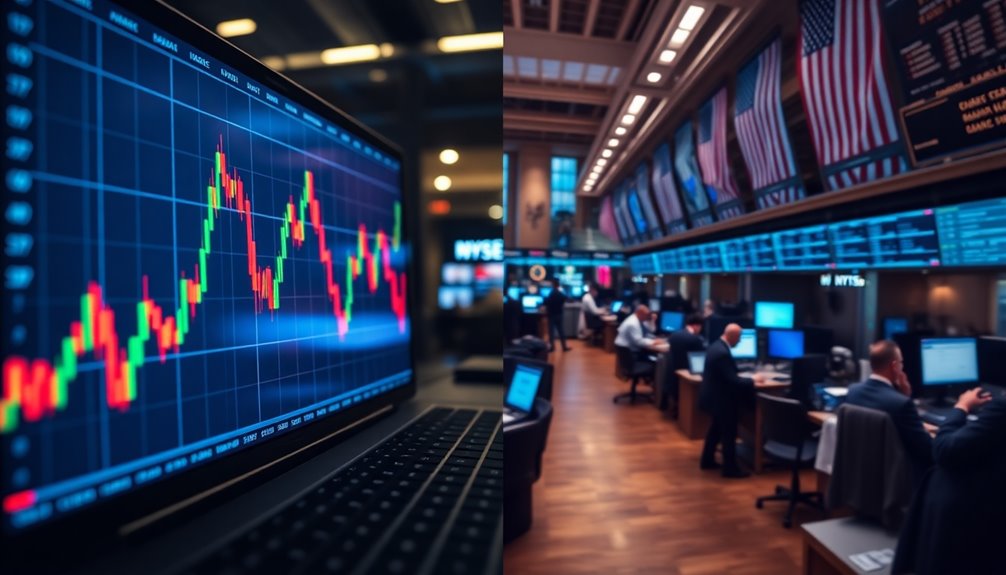
While both crypto and traditional futures trading share the fundamental concept of speculating on price movements, they cater to distinctly different markets and assets.
Crypto futures focus on digital assets, allowing you to speculate on the future price fluctuations of cryptocurrencies, whereas traditional futures often involve physical commodities like oil or gold.
Leverage in crypto can be much higher, with some platforms offering up to 100x leverage, compared to lower ratios in traditional markets.
Additionally, the crypto market tends to experience greater price swings, presenting both risks and opportunities.
Regulatory oversight also differs considerably; traditional futures are regulated by the CFTC, while crypto futures face evolving scrutiny that influences trading practices and environments in the financial markets.
Market Manipulation Concerns
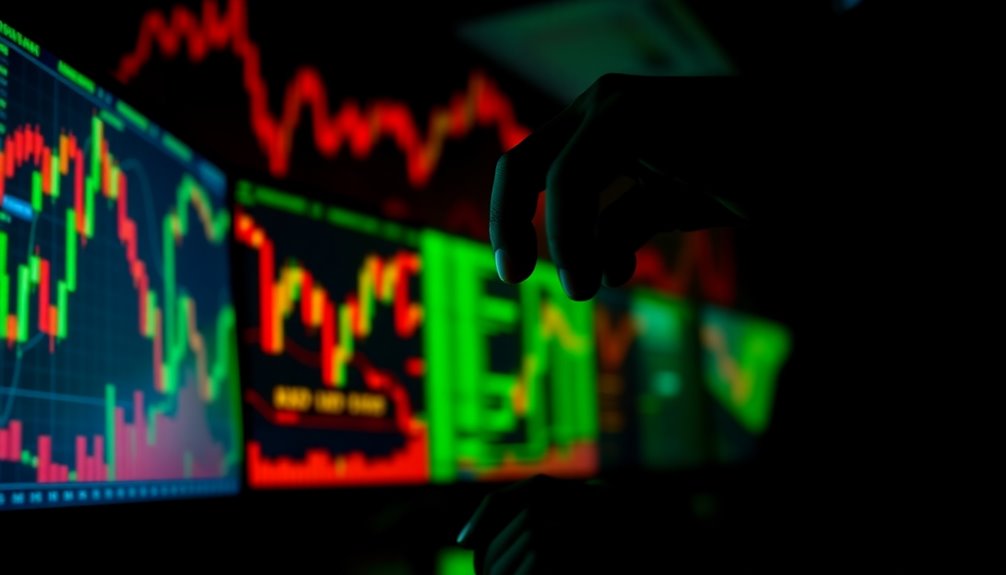
Market manipulation poses a significant threat to the integrity of crypto futures trading. Practices like wash trading and spoofing can create misleading price movements, impacting your investments.
Research shows that about 95% of Bitcoin trading volume on certain exchanges might be artificially inflated, raising serious concerns for investors. The decentralized nature of cryptocurrency markets often leads to limited regulatory oversight, making them more susceptible to manipulation compared to traditional financial markets.
High leverage ratios in futures trading can further amplify these effects, causing rapid price swings that trigger liquidations and margin calls for unsuspecting traders.
While regulatory bodies like the CFTC are increasing scrutiny, enforcement remains a challenge, leaving many investors vulnerable to potential market manipulation.
Emerging Regulatory Frameworks
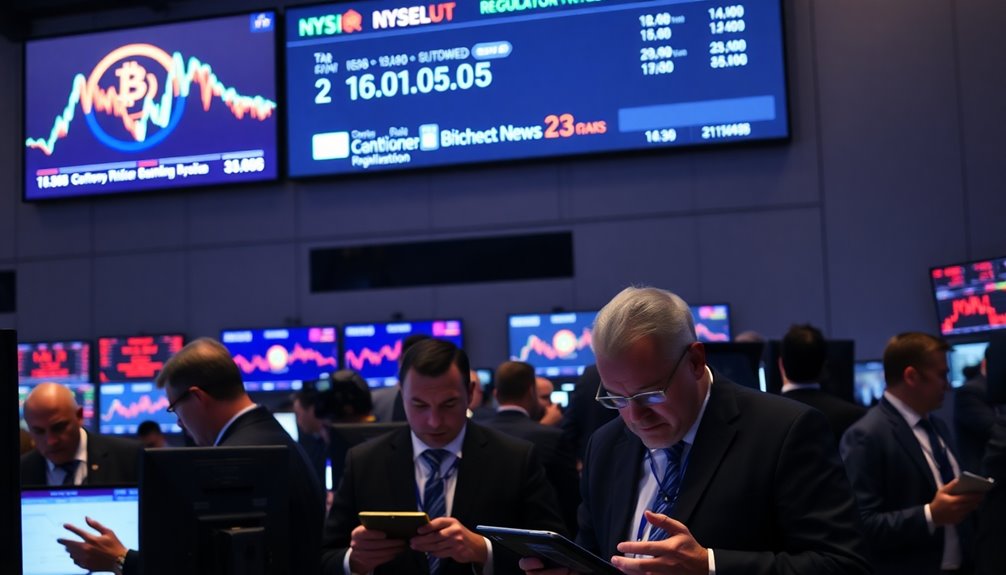
The rise of market manipulation concerns in crypto futures trading has prompted regulators to take action. The U.S. Commodity Futures Trading Commission (CFTC) now oversees emerging regulatory frameworks to protect investors and guarantee market integrity.
As of October 2023, exchanges offering cryptocurrency futures must meet specific registration and reporting requirements, enhancing transparency within the market. Ongoing discussions focus on clearer guidelines for the classification of cryptocurrencies as either commodities or securities, impacting futures trading practices considerably.
Additionally, regulations targeting stablecoins are being introduced to reduce volatility risks and improve liquidity. Expect more stringent capital requirements and risk management protocols for Futures Commission Merchants (FCMs), shaping the future of your trading landscape.
Leverage Trading Cautiously

When engaging in crypto futures trading, it's essential to approach leverage with caution, as it can magnify both profits and losses. High leverage ratios, sometimes up to 100x, allow you to control larger positions than your capital would normally permit.
However, this increases the risks of liquidation if your margin can't cover losses. A margin call can occur when your account equity dips below the required maintenance margin, forcing you to add funds or risk losing your position.
Beginners should stick to lower leverage, like 2x to 5x, to better manage the volatility of the market. Remember, excessive leverage can lead to rapid losses, potentially wiping out your entire investment in just a few trades.
Frequently Asked Questions
How Does Crypto Futures Trading Work?
Crypto futures trading works by allowing you to enter contracts that speculate on a cryptocurrency's future price.
You can take long or short positions based on your market predictions, aiming to profit from price movements.
You'll need to meet margin requirements to open a position, often using leverage to control larger amounts with less capital.
Is Crypto Futures Trading Profitable?
"Don't put all your eggs in one basket."
Crypto futures trading can be profitable, but it's a double-edged sword. You can capitalize on price movements without owning the assets, and leverage lets you control larger positions with less capital.
However, the volatility of the market means you might face significant losses too.
With proper risk management and market analysis, you can navigate this landscape, potentially reaping substantial rewards while minimizing risks.
How Does Trading Futures Work?
When you trade futures, you enter contracts to buy or sell an asset at a set price for a future date.
You can take long or short positions based on your market predictions. You'll need to meet margin requirements, which involves collateral, and you can use leverage to amplify your potential gains—though it also increases risks.
As expiration approaches, you can manage your positions by offsetting or rolling over contracts.
What Is Futures Trading With an Example?
Futures trading lets you speculate on price movements, offering opportunities for profit whether you think prices will rise or fall.
For example, if you expect a stock to increase, you might buy a futures contract at $50. If the price climbs to $60, you sell for a profit.
Alternatively, if you predict a drop, you could short the contract at $50. If it falls to $40, you buy back at the lower price, pocketing the difference.
Conclusion
In the fast-paced world of crypto futures trading, you're stepping into a digital Wild West, where opportunities and risks collide. By understanding the ins and outs of futures contracts and exercising caution with leverage, you can navigate this thrilling landscape. Remember, while the potential for profit is enticing, it's essential to stay informed about market manipulation and emerging regulations. So, saddle up and trade smart—your journey into crypto futures awaits!
